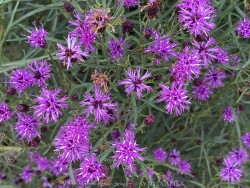
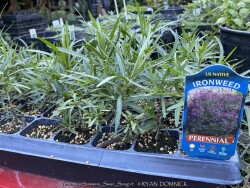

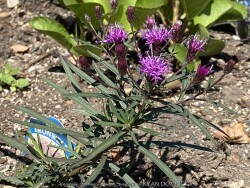
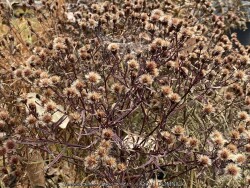


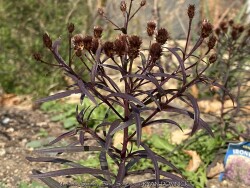
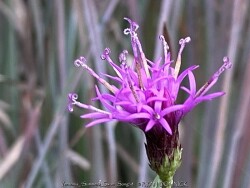
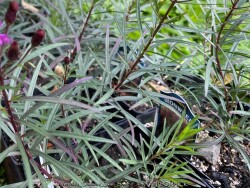

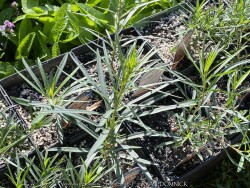
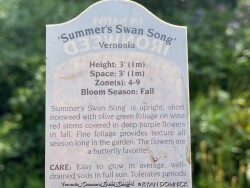
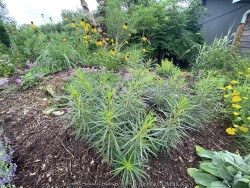
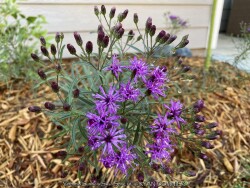

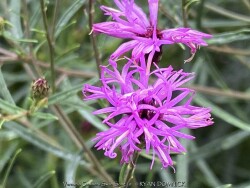
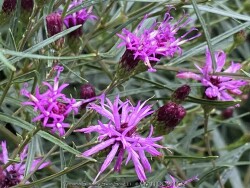
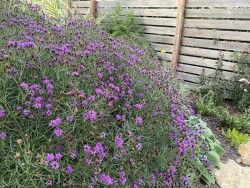
Plant Min Zone: 4b
Plant Max Zone: 9b
Sunlight: All Day Full Sun, Full Sun, Part Sun
Water / Rainfall: Low, Average
Soil Quality: Poor, Average
Bloom Season: Early Summer, Summer
Flower Color: Magenta, Purple, Reddish Purple
Berry / Fruit Color: None
Spring Foliage Color: Green
Summer Foliage Color: Green
Fall Foliage Color: Reddish Purple
Evergreen Foliage: No
Winter Interest: Yes
Scented Flowers: No
Drought Tolerance: Medium, High
Wet-Feet Tolerance: Medium, High
Humidity Tolerance: Medium, High
Wind Tolerance: High
Poor Soil Tolerance: Clay Soils, Rocky Soils, Shallow Soils, Sandy Soils, Acidic Soil (low PH), Alkaline Soils (high PH)
Height: 2' - 2.5'
Width: 2' - 3'
Growth Rate: Medium
Service Life: Very Long: 10-20 years
Maintenance Need: Almost Zero Maintenance
Spreading Potential: Low
Yearly Trimming Tips: Trim Perennial to Ground in Early Spring before New Growth: Has Winter Interest.
Plant Grouping Size: Small Grouping of 3-5, Medium Grouping of 5-10, Mass Planting of 10 or more
Best Side of House: South Exposure, West Exposure, East Exposure, North Exposure
Extreme Planting Locations: Top of Retaining Wall Locations, Survives Severe Drought, Tolerates Extreme Heat, Tolerates Periods of Standing Water
Ornamental Features: Multiple Seasons of Interest, Long Blooming Season, Long Lasting Fall Color, Fine Texture, Exceptional / Colorful Foliage
Special Landscape Uses: Groundcover, Naturalizing
Possible Pest Problems: Rabbits
Plant Limitations: None
Shippable in 2026: YES
***Description for this perennial available with future update!*** Vernonia lettermannii 'Summers Swan Song' is also known as Summers Swan Song Narrow-leaf Ironweed >>>>> Narrow-leaf Ironweed (Vernonia lettermannii) is a relatively new plant to horticulture; originally discovered in Arkansas along gravel stream beds in the wild. The Iron Butterfly cultivar (Vernonia lettermannii 'Iron Butterfly') is a dwarf compact cultivar introduced by Dr. Allan Armitage at the University of Georgia. This is a true four-seasons perennial that belongs in almost every perennial garden. In the spring, narrow dark green foliage resembling Amsonia hubrichtii creates a compact shrub-like appearance. The growth is so dense that no weeds have a chance of invading a mature stand of plants. By mid to late summer, gorgeous deep purple fine-textured flowers cover the plant for 4-6 weeks. Butterflies, bees, and other pollinators flock to the occasion. Following the bloom, the flower stocks are sturdy and hold up very well for fall and winter interest. The flowers themselves produce mostly non-viable seed and cling to the plant creating a silvery shine whenever sunlight hits it. This can be very useful and dried flower arrangements as well as winter interest gardens. At some point in the winter, all top growth will need to be cut back as this is the only maintenance required. Despite being native to gravel and sand bars along rivers, Iron butterfly Vernonia surprisingly can handle very dry clay, gravelly, or sandy soils along with short periods of flooding. Permanently wet soil is not favored but it can handle the upper portions of a rain garden. Iron butterfly has only one pest problem and that is rabbits! If rabbits are an issue, just put a bowl-shaped chicken wire cage around the plants for the first year. By year #2, the rapidly growing foliage will outgrow any detrimental rabbit browsing. This is definitely one of the most adapted landscape plants in Kansas zone 6a with no problems with heat or cold, dry or wet! It's hard to imagine a perennial garden without this plant!